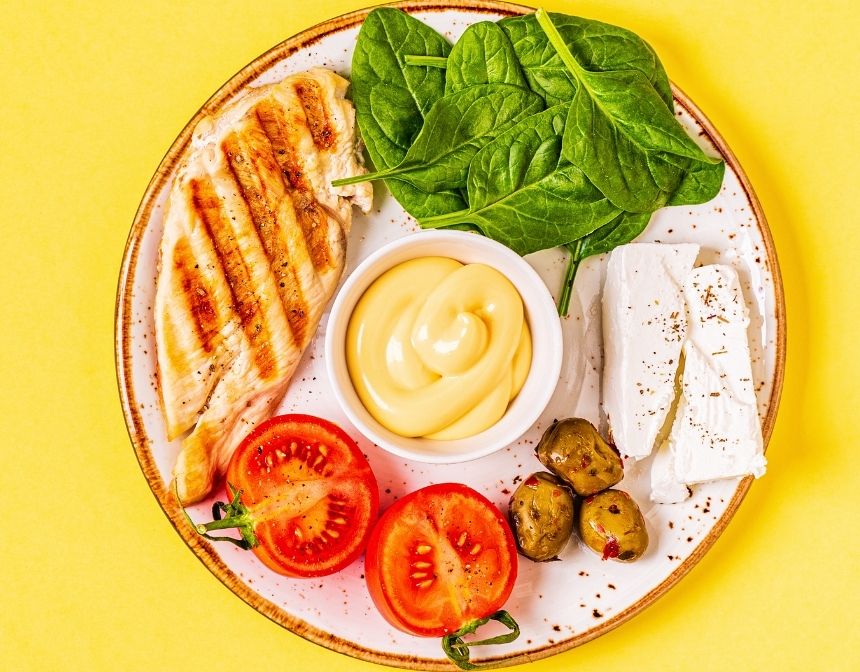What Is A Spaghetti Squash?
Spaghetti squash, also known as vegetable spaghetti, is a unique winter squash variety that, when cooked, yields tender strands that resemble spaghetti noodles. It is named after its characteristic flesh, which transforms into long, thin strands that resemble spaghetti once cooked. Spaghetti squash has a mild flavor and a slightly sweet taste, making it a versatile ingredient in various dishes.
The squash itself has a hard, thick outer skin that can range in color from pale yellow to vibrant golden or even a deep orange hue. Inside, the flesh is pale yellow or ivory in color, and it contains a cavity filled with seeds and stringy pulp that should be removed before cooking.
Spaghetti squash is known for its health benefits, as it is low in calories, fat, and carbohydrates, making it a popular choice for those seeking a lighter alternative to traditional pasta. It is also a good source of vitamins and minerals, including vitamin C, vitamin A, potassium, and dietary fiber.
Due to its unique texture and neutral flavor, spaghetti squash can be used as a substitute for pasta in a wide range of dishes. It pairs well with various sauces, including marinara, pesto, Alfredo, or as a base for stir-fries, salads, casseroles, or stuffed squash recipes.
Is Spaghetti Squash Healthy?
Yes, spaghetti squash is considered a healthy food choice. It is low in calories and carbohydrates compared to traditional pasta. This makes it a popular substitute for those seeking a lighter or lower-carb option. It is also a good source of fiber, vitamins C and B6, and various minerals. Spaghetti squash has its unique texture and turns into spaghetti-like strips when cooked. This makes it a versatile ingredient in many dishes. It can be consumed as a nutritious alternative to pasta or as a base for various sauces, stir-fries or casseroles.
How Do You Eat Spaghetti Squash By Itself?
You can eat spaghetti squash by itself after it's been cooked. Simply cut the squash in half, remove the seeds, and roast it in the oven. Once it's cooked, you can use a fork to scrape out the spaghetti-like strands and enjoy it with a bit of salt, pepper, and butter, or any other seasonings you prefer.
Is Spaghetti Squash The Same As Butternut Squash?
No, spaghetti squash and butternut squash are not the same. While both are types of winter squash, they have different textures and flavors. When cooked, spaghetti squash has a unique texture that resembles strands of spaghetti, hence its name. Butternut squash, on the other hand, has a sweet, nutty flavor and a smooth, creamy texture when cooked.
How Long Is Spaghetti Squash In Season?
Spaghetti squash is typically in season from early fall through winter. However, it can often be found in grocery stores year-round.
How Should Spaghetti Squash Taste?
Spaghetti squash has a mild, slightly sweet flavor. Its texture is unique among squashes because the cooked flesh separates into spaghetti-like strands. It's often used as a low-carb substitute for pasta.
How To Cook Spaghetti Squash?
Spaghetti squash is a versatile and healthy vegetable that can be cooked in various ways.
Baked Spaghetti Squash: One popular method is baking, which involves cutting the squash in half, removing the seeds, and roasting it in the oven until the flesh becomes tender.
Microwave Spaghetti Squash: You can cook the spaghetti squash in the microwave. Pierce the spaghetti squash several times with a fork. Place the whole squash in a microwave-safe dish and microwave on high for about 10-12 minutes, or until the squash is soft.
Instant Pot Spaghetti Squash: For quicker cooking time, the Instant Pot method is a great choice. Simply pierce the squash, place it on the trivet with some water, and pressure cook it until tender. Once cooked, the squash can be scraped into strands resembling spaghetti, ready to be used as a healthy pasta alternative or as a base for various dishes.
How Long To Cook Spaghetti Squash?
The cooking time for spaghetti squash can vary depending on the size of the squash and the desired level of tenderness. It's always a good idea to check for doneness by testing the flesh with a fork. It should be tender and easily separated into strands.
What To Serve with Spaghetti Squash?
Spaghetti squash can be served with a variety of delicious dishes. For a simple and light option, toss the cooked squash strands with olive oil, garlic, and herbs such as basil or oregano. You can also top it with your favorite marinara sauce for a classic spaghetti experience, or try it with a pesto sauce for a vibrant and flavorful twist. For added protein, serve spaghetti squash alongside grilled chicken, shrimp, or tofu. You can also add it to stir-fries or salads. Additionally, sprinkle some Parmesan or feta cheese over the squash strands to add a savory touch.
Here are our delicious recipes that you can serve with Spaghetti Squash:
History of Spaghetti Squash
The origin of the Spaghetti Squash recipe is quite fascinating. This unique variety of squash is native to Central and North America and has been a staple in the diets of indigenous peoples for centuries. Its name comes from the spaghetti-like strands that form when the cooked squash is scraped with a fork. It was first introduced to the wider world in the early 20th century and has since become a popular low-carb substitute for pasta in many dishes.
The versatility of spaghetti squash is one of its most appealing attributes. It can be baked, boiled, steamed, or microwaved, and its mild flavor makes it a perfect canvas for a wide range of seasonings and sauces. From a simple preparation with butter and herbs to a more complex dish with marinara sauce and meatballs, spaghetti squash can be adapted to suit any palate.
In recent years, spaghetti squash has seen a resurgence in popularity due to its health benefits. It's low in calories and high in fiber, making it a great choice for those looking to maintain a healthy diet. Additionally, it's a good source of vitamins A and C, which are essential for immune function and skin health. Whether you're a long-time fan or a newcomer to this versatile vegetable, there's no denying that spaghetti squash has earned its place in the culinary world.





































